|
By Graham K. Rogers
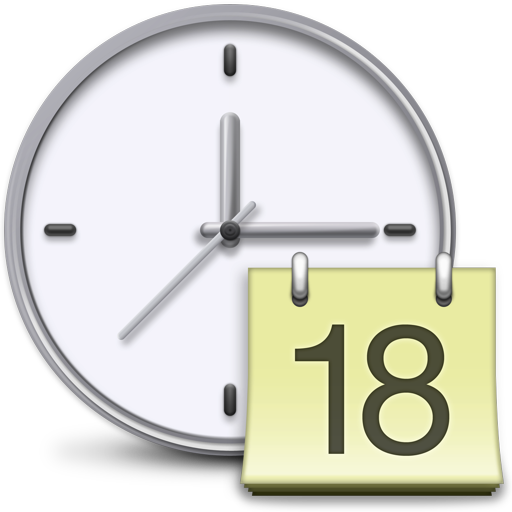
There have been a number of changes and additions to System Preferences in OS X 10.8, Mountain Lion. While some of the existing panels have seen major overhauls, Date & Time has slight changes to what was available in OS X 10.7, Lion.
The Date & Time panel looks basically unchanged, but there are some subtle differences that suggest, like much else in the latest version of OS X, there have been a number of tweaks to the underlying code. In practical terms that may mean little to those who use Macs. The Date & Time preference pane is in three parts: Date & Time; Time Zone; and Clock.
It is in the first of these that an apparently-minor change may be seen in that the small calendar dislayed there differs from what was shown in OS X 10.7 (Lion). There is no longer shading week by week, the back and forward buttons are resited to the right with the month and year to the left. The text and the direction arrows are black (before they were grey). Above the month display is a numerical confirmation of the selected date. The date information cannot be changed if the checkbox at the top left -- Set date and time automatically -- is checked.
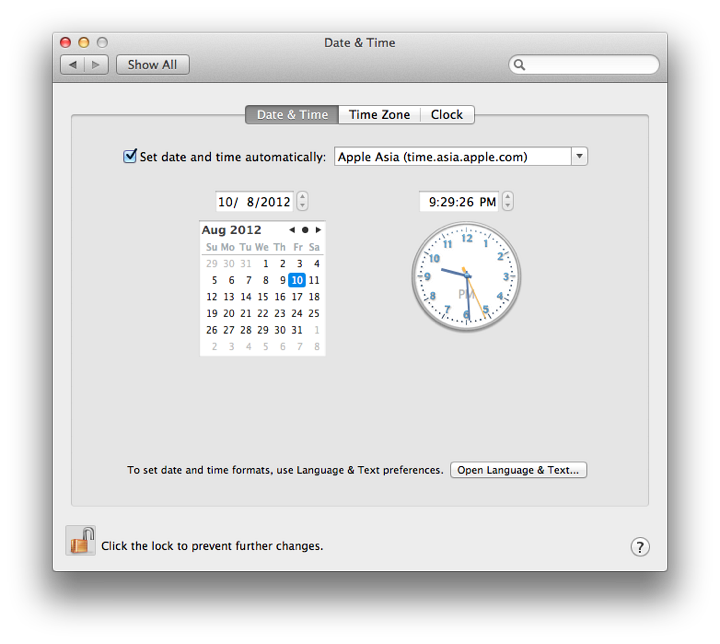
When the checkbox is used, the online server that is used (in my case Apple Asia) controls the date and time displayed. Other servers listed are Apple Americas/US and Apple Europe. With each of these servers, a server link is shown (e.g. time.asia.apple.com) although this cannot be used to open a page in a browser. Alterations to settings can also be prevented by a padlock icon to the bottom left of the panel. A link within the panel will open the Language & Text
preferences where the Region and language settings may be changed.
The Time Zone panel displays a world map which is the same as the updated one used in OS X 10.7, Lion. This uses data from Geonames.org: a geographical database that covers all countries. When online, the system is able to detect the city location and will drop a pin, also selecting the time zone and displaying the city and country names.
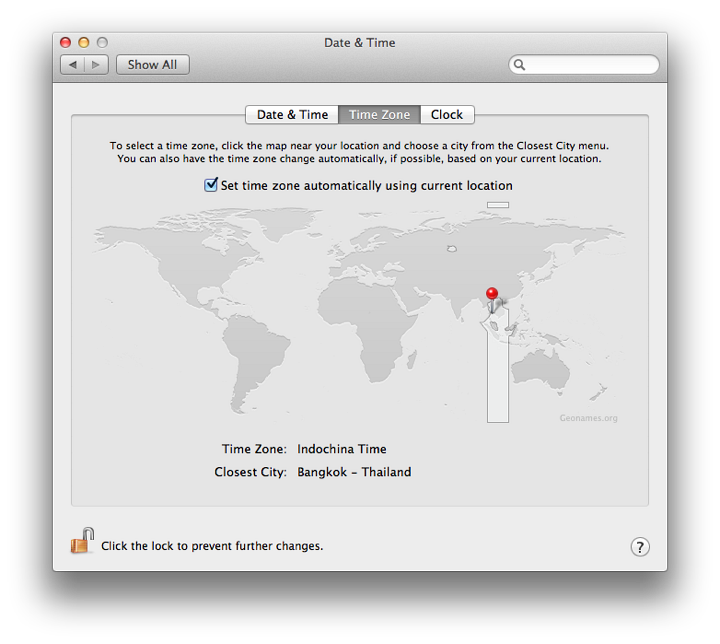
These locations may also be changed manually. I am aware of users coming to Bangkok who wish to keep the computer set for their own home locations; and when I visited San Francisco, I kept the settings for Bangkok for working convenience (deadlines and phoning friends).
A checkbox near the top of the panel is for automatic setting of the time zone, so that a change in the computer's location will reset the date/time with no need for user input. All these settings may also be adjusted manually. For example, if I wanted to synchronise with the events in the Olympic Games (currently running), I can click on London: the city/country are displayed with above "British Summer Time." For automatic time zone operation, Location Services must be enabled in the Privacy settings of Security & Privacy preferences.
The panel marked Clock has a number of checkboxes for options as to type of clock, how the clock displays and other information.
At the top is a checkbox for the display of time data in the menu bar. If this is, used several options below are live. First are radio buttons to select a digital or analog (clock face) display. Selecting Analog greys out other options.
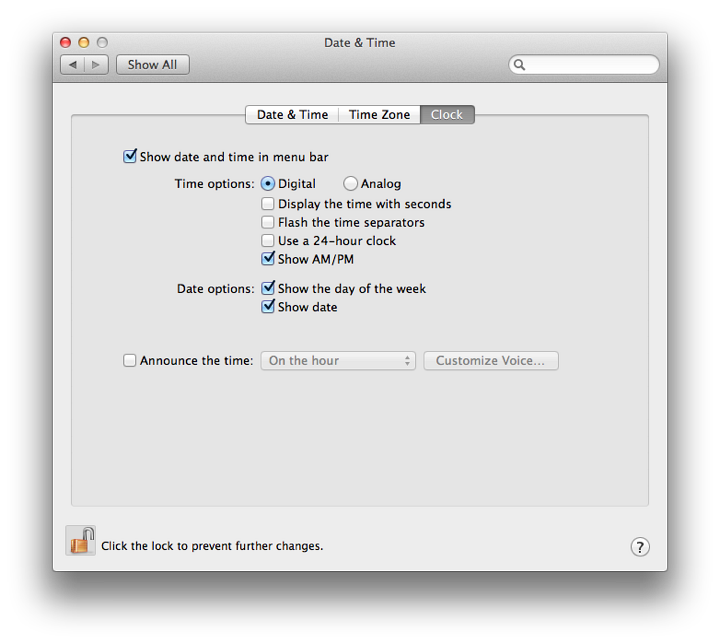
There are several choices for the digital displays: for example, using a 24-hour clock, or to show AM and PM. Other options for display are to include seconds and to flash time separators, like the colon between hours and minutes.
An additional checkbox may be used to announce the time at intervals: on the hour, half-hour, or quarter hour. The voice can also be selected here using the button to the left. This voice can be changed and may be independent of the system voice. The speed and volume of time announcements may also be changed in this panel via sliders. A Play button here allows us to check the voice delivery before pressing OK to confirm.
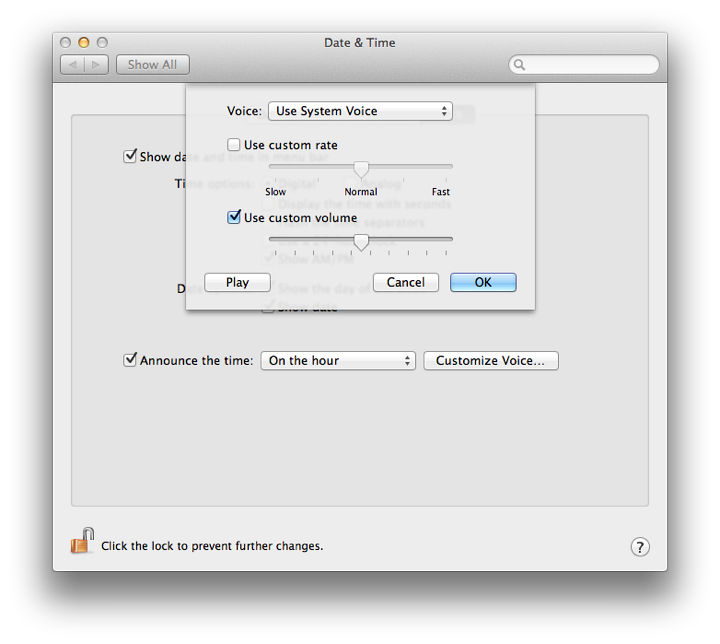
Graham K. Rogers teaches at the Faculty of Engineering, Mahidol University in Thailand. He wrote in the Bangkok Post, Database supplement on IT subjects. For the last seven years of Database he wrote a column on Apple and Macs.
|








